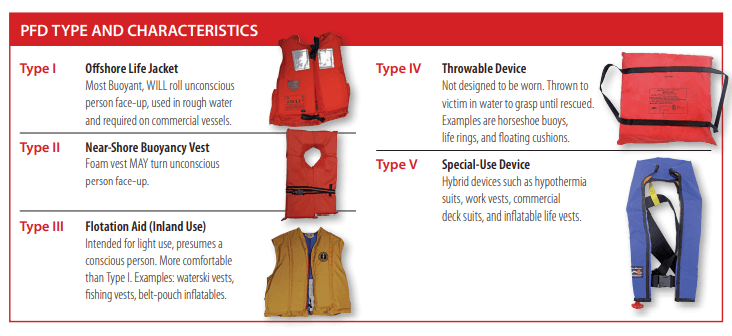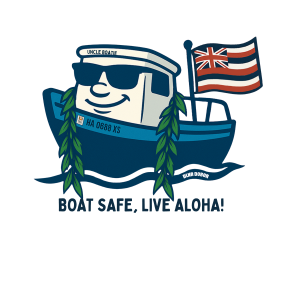Personal Floatation Device
Life Jackets = PFDs (Personal Flotation Device)
Pick the One That’s Right for You and Your Passengers
In Hawaii, children 12 years of age and under must wear a personal floatation device (PFD) while aboard a vessel operating or anchored offshore (HAR 13-243-1).
Approximately 85-90% of the people who die in boating accidents ended up in the water unexpectedly and drowned. Adults should wear their life jackets at all times while on the water and serve as a good example to their children.
Remember: LIFE JACKETS FLOAT, YOU DON’T

General Carriage Requirements
- One Per Person: Every vessel must have at least one USCG-approved wearable life jacket for each person on board.
- Accessibility: Wearable life jackets must be “readily accessible,” meaning they are not in original packaging, under lock and key, or buried under gear.
- Condition: All devices must be in “serviceable condition” (no rips, tears, or broken buckles).
- Proper Fit: Jackets must be the correct size for the intended wearer, based on body weight for children and chest size for adults.
Requirements by Vessel Type and Length
- Vessels Under 16 Feet (Including Canoes and Kayaks): Must carry one wearable life jacket (Type I, II, III, or V / Level 70 or higher) for each person.
- Vessels 16 Feet and Longer: In addition to wearable life jackets for everyone, these vessels must carry at least one Type IV throwable device (e.g., a ring buoy or seat cushion) that is “immediately available”.
- Note: Canoes and kayaks are typically exempt from the throwable device requirement even if they exceed 16 feet.
- Thrill Craft (Jet Ski) Personal Watercraft (PWC): Operators and passengers must wear a USCG-approved life jacket at all times. Inflatable life jackets are generally prohibited for PWC use.
Age-Specific Mandates
- Children Under 13: Federal law requires children under 13 to wear an appropriate USCG-approved life jacket while on the open deck of any vessel that is underway (moving), unless they are in an enclosed cabin or below deck.
- Inflatable Life Jackets: These are only approved for use by persons 16 years of age or older.
Labeling Standards for 2026
As of 2025, the USCG transitioned to a “Performance Level” labeling system (Levels 50, 70, 100, 150) rather than the legacy “Type I-V” system.
- Legacy “Type” labels remain legal as long as the device is in serviceable condition.
- Level 70 is the standard for most recreational boating in calm, inland waters.
- Level 100 or 150 is recommended for offshore or rough water conditions.
For detailed information or to schedule a free safety check, visit the USCG Boating Safety site or contact the USCG Auxiliary.
